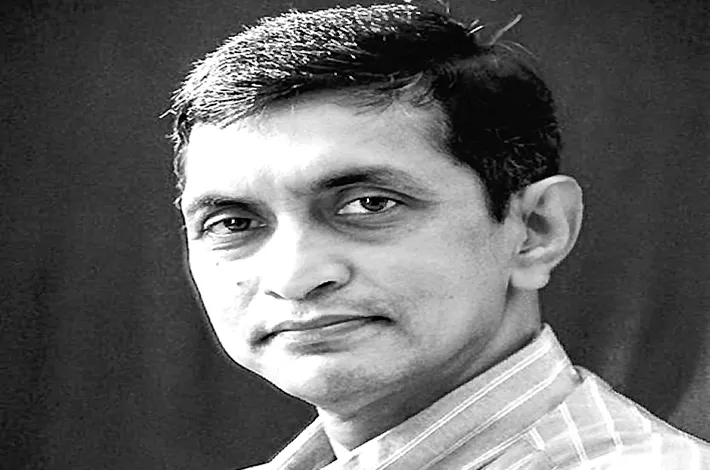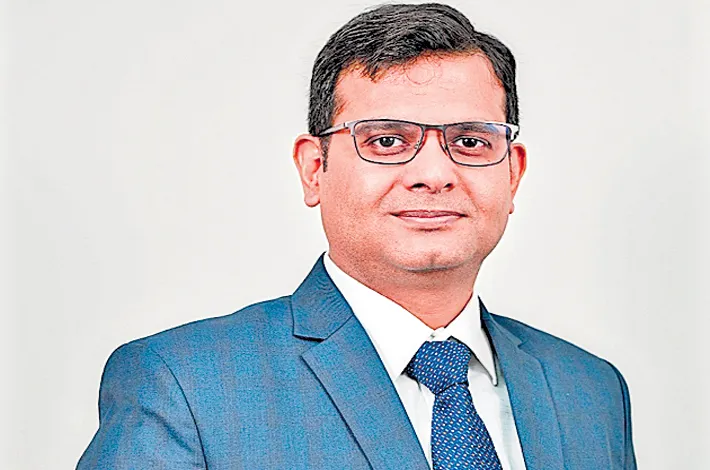India’s eco growth in the face of restrictive trade practices
06-10-2025 12:00:00 AM

States are where real governance is. Therefore, the real challenges to boost growth in the face of an uncertain external climate lie in states
Our democracy is robust and real, but there are many flaws which need to be corrected. Our electoral system and political culture breed autocracy, militate against meritocracy in politics, create huge entry barriers, fuel corruption and rent-seeking, and undermine rational public policy. Our failure of the rule of law creates a lawless society in which might is right, and criminal gangs and powerful ‘elites’ dispense rough and ready ‘justice’, often with brute force. Local governments are largely irrelevant, and power is concentrated at the state level, with legislators acting as disguised executives. The centralisation makes our voters volatile and our democracy fragile, making it difficult to focus on long-term collective good. In the absence of a clear link in the minds of the voters between their vote and the direct impact on their lives on a daily basis, the voters tend to be swayed by money and inducements, get polarised on the basis of caste and other primordial loyalties, and seek instant gratification in the form of unsustainable welfare at the cost of long-term prosperity.
Unfortunately, there is no appetite for real political and governance reform in the country among the elite groups—politicians, bureaucracy, business class, middle class and media. Democratisation of political parties to allow genuine participation and rise of the most public-spirited citizens to power, electoral system reforms to eliminate the role of illegitimate and unaccounted money in politics, real rule of law, genuine empowerment of local governments with accountability, and civil service reforms to improve service delivery and accountability will have to wait until more and more citizens reach middle-class status and demand real change.
Given these circumstances, a sustained high growth rate for a period of two to three decades is our best bet as a country. India has witnessed robust growth rates in recent years. But global headwinds are evident. Suddenly, after decades of momentum in favour of free trade, restrictive trade practices have come back into fashion. The US imposed a penal tariff of 25% on us to dissuade us from purchasing Russian oil. Western Europe, also, is building pressure to wean us off Russian oil. The trade talks with the US have resumed, but the outcome is anybody’s guess, given the unpredictability in the US policy and the volatile global situation. The Saudi-Pak security pact can potentially pose challenges to our own security and economic links with Saudi Arabia. The H-1B visa fee increase and the US tariffs on pharma imports add to the uncertainty. While each of these can be handled in isolation, cumulatively these problems can pose a formidable challenge to our economic growth project.
In all this uncertainty, the one silver lining is the healthy public finances of the Union government. The deleterious impact of the Covid pandemic on public finances has been felt in all major economies. Enforced lockdowns to prevent rapid spread of infection led to economic paralysis and reduced government revenues at the time; expenditure shot up to address the healthcare crisis and the growing needs for welfare expenditure in the face of unemployment. All major economies incurred huge public debts and increased public expenditure and welfare handouts. It was somewhat ironic that many reputed economists argued in favour of significant handouts to put money into people’s pockets in order to stimulate the economies, even as the economic slowdown was a result of deliberate policy to shut down the economic activity and supply chain disruptions. The Keynesian economies failed in the unique circumstances of the pandemic. Despite the conventional wisdom to spend more, the Union acted with great restraint and foresight. Expenditure was incurred liberally to confront the pandemic—vaccines, healthcare, food for vulnerable sections, support for SMEs, etc. But, otherwise, there was impressive belt-tightening.
Even otherwise, there has been significant improvement in the Union’s fiscal situation. The revenue deficit, which stood at 2.9% of the GDP in 2014-15, has now been brought down to 1.5% (2025-26 BE). If you exclude the grants-in-aid for capital assets, the revenue deficit now is 0.3% of the GDP. The interest burden is relatively steady for a decade at 24-25% of total Union expenditure and 3.25-3.5% of the GDP, despite a significant rise in debt during the Covid period. Capital expenditure has grown from about 12% of total expenditure in 2014-15 to over 30% (25-26 BE), and in GDP terms, from 1.5% to 4.34%. The Union fiscal deficit, which stood at 4% of the GDP in 2014-15, grew alarmingly to 9.2% in 2020-21 due to the Covid crisis. It has been brought down to a much more healthy 4.8% in 2024-25 and is projected to be 4.5% in 2025-26. As a result of this fiscal restraint, the Union’s public debt, which reached 61.4% of the GDP in 2020-21, is progressively decreasing and is estimated to be around 56% in 2025-26 and targeted at 50% by 2031.
Perhaps the most impressive turnaround in the past decade was in the performance of public sector banks. Their combined losses stood at about Rs 80,000 crore per year in 2014-15. Today their combined profit is of the order of Rs 100,000 crore per annum! Over Rs 400,000 crore was infused into the banks to meet capital adequacy norms, and their recovery has improved. Non-performing assets, which stood at over 12% in 2018, have now come down to an impressive 2.5%!
All these measures of fiscal prudence, high capex, and banks’ profitability now give us fiscal elbow room to confront the global headwinds. But states are where real governance is. Therefore, the real challenges to boost growth in the face of an uncertain external climate lie in states. India is a truly federal nation now, with the states shaping the destiny. Let us examine the state’s finances in the next column.








